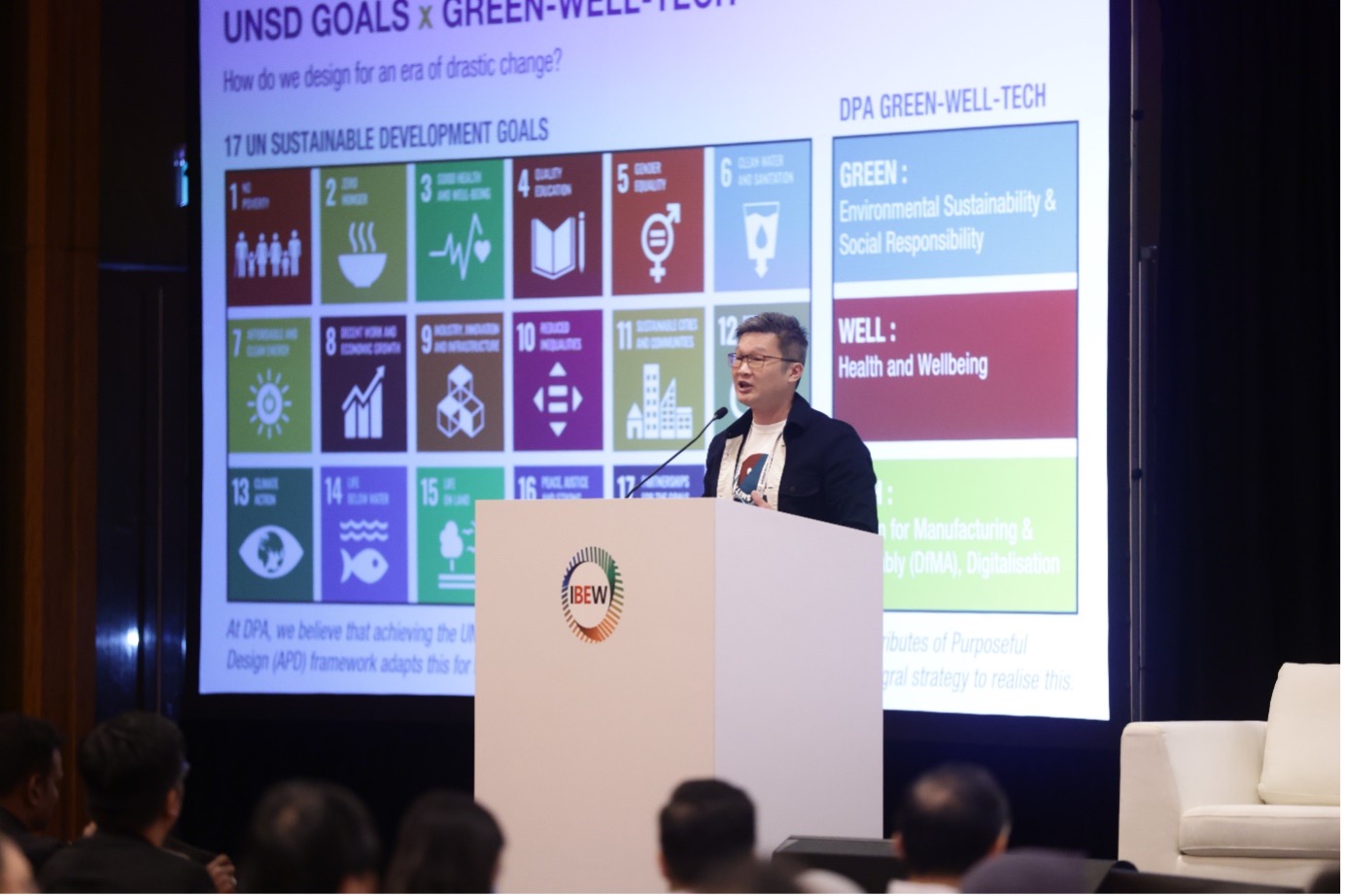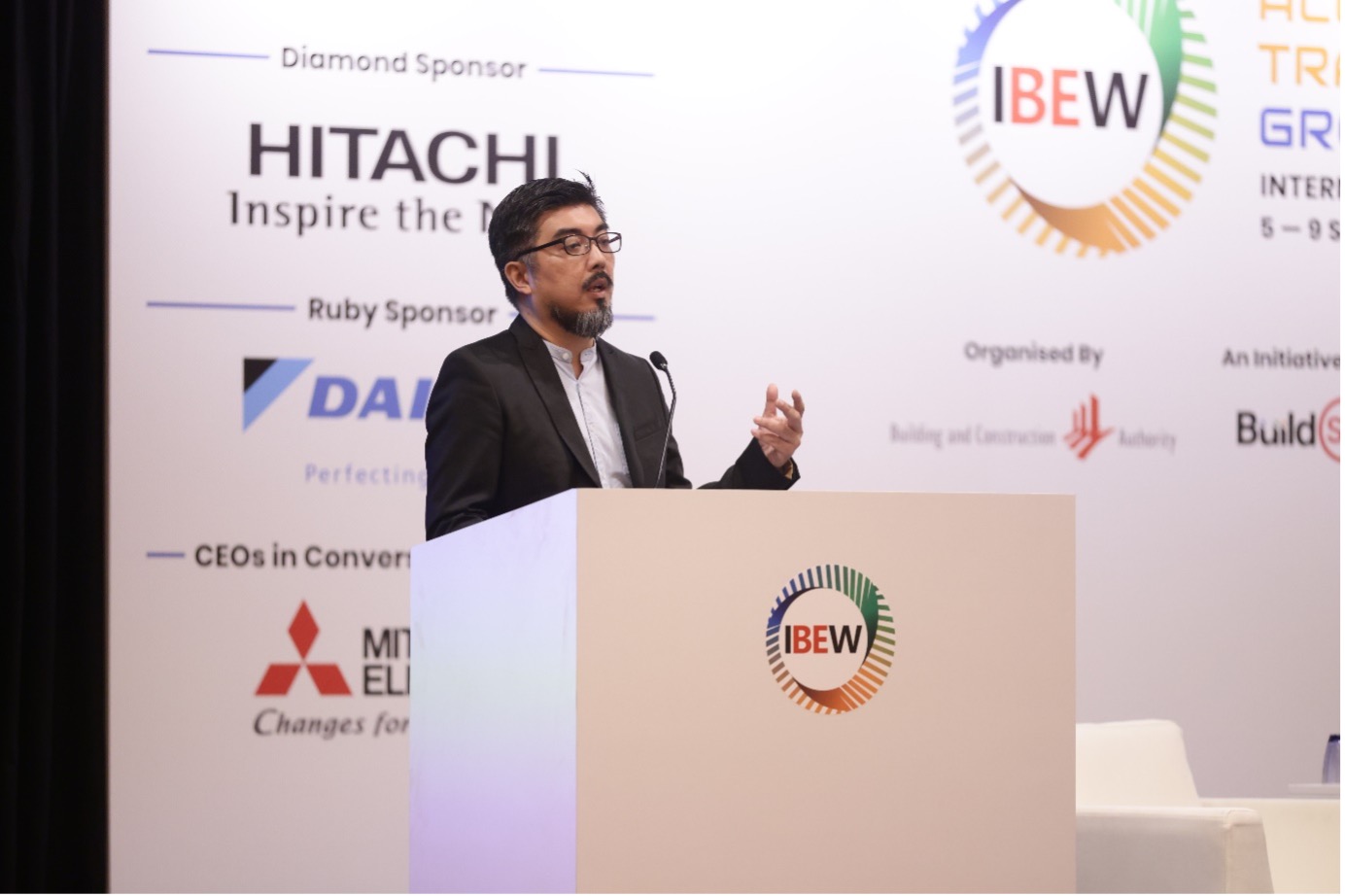At the 2016 Amsterdam Light Festival, an interactive installation aglow with rainbow hues drew much attention. Indeed, the coral-shaped Rhizome House by Singapore’s DP Architects was unique in more ways than one.
Besides its distinctive looks, the structure also broke the mould of Design for Manufacturing and Assembly (DfMA). While most view Prefabricated Prefinished Volumetric Construction (PPVC) as rectangular modules that fit together like Lego pieces, DP Architects decided to take a different perspective.
“We sought to create organic shapes using DfMA,” said Ar. Chua Zi Jun, Director of DP Architects during a panel discussion at the International Built Environment Week (IBEW) 2022. The session covered the opportunities that DfMA methods offer the BE sector.
|
|
 Ar. Chua Zi Jun, Director of DP Architects Ar. Chua Zi Jun, Director of DP Architects
|
|
Ar. Chua explained how the team focused on biomimicry – applying nature in design – while designing the project and made modules using special mathematical equations called parametrics. This allowed them to distil a complex shape into just 11 modules. These were then shipped from Singapore to the Dutch capital and installed by a two-man team, using simple tools like screws and nails.
DfMA is an integral aspect of Singapore’s refreshed BE Industry Transformation Map (ITM), falling under the pillar of Advanced Manufacturing and Assembly (AMA). Besides DfMA, AMA also includes the likes of off-site construction, automated fabrication and optimal land and resource use.
“We need to break out of traditional DfMA and modularity design,” added Ar. Chua. “We must think of modularity as a way of designing instead of a way of building.”
Building an ecosystem of innovation
This innovative spirit is just what the construction industry needs now, noted Er. Lee Teck Lun, Associate Partner and Vice President of management consultancy Mckinsey & Company Singapore.
Noting how the COVID-19 pandemic had accelerated the need for industry-wide transformation, he stressed that a more standardised and integrated construction process, like that of manufacturing, can improve multiple aspects of the industry. This will lead to a more cohesive and efficient ecosystem.
“Small players can merge into larger entities, certain components of projects can be standardised and contractors can be roped in earlier in the design process,” he elaborated. “In the face of transformation, there can be a lot of gains if companies make a bold move now and start to invest in and think about the next shift in the markets.”
One prefabrication company on the right track is Robin Village International, a member of the Tiong Seng Group. Using one of its projects, Outward Bound School @ Coney Island, as an example, Mr Xavier Pek, Managing Director of Robin Village International and GRV Group, showed how different technologies like Mass Engineered Timber (MET), a building material comprising engineered wood products with improved structural integrity, can be used in DfMA.
|
|
 Mr Xavier Pek, Managing Director of Robin Village International and GRV Group Mr Xavier Pek, Managing Director of Robin Village International and GRV Group
|
|
Although modules themselves are crucial, the components inside them are just as important. Thus, Mr Pek also emphasised on the importance of ensuring the efficient manufacture of modular furniture, citing what happened when such demands were not met in the past.
“When the supply chain could not manufacture and supply furniture for modular systems sufficiently, carpenters had to make the furniture instead,” he said. “That is not viable to scale.”
Since the supply chain is an integral part of the construction industry, transformation in logistics should keep pace with the BE sector, noted Mr Walter Lin, the General Manager of Jurong Port.
“The entire supply chain is very, very complicated and complex,” he said. “With so many players involved, there is a lot of going back and forth in the supply chain in Singapore.”
The solution, he added, is to simplify and streamline.
“We want to integrate and organise all elements of the supply chain in a logical manner to achieve optimised efficiency,” said Mr Lin. “For instance, we can bring these elements near the port, which reduces double handling and shortens the supply chain. Services can also be shared.”
This, he explained, will streamline the production, storage and transportation of resources. “Then, we can adopt technology and off-site construction using PPVC and precasting to ensure an even more resilient supply chain.”
Piecing together the future of construction
The insightful presentations were followed by a Q&A session, which was moderated by Mr Ramamoorthy Rajendran, Director at DigitalBuild, which helps construction companies digitalise work processes. Several questions were asked, from the impact of governmental support to the competition between local and foreign organisations .
One question posed to Ar. Chua was how industry players in Singapore juggle creativity with the need to manage stakeholders and comply with government regulations.
“The agencies and regulatory bodies have a huge say in how we proceed,” he acknowledged, but added that the next lap in DfMA will be driven by how 3D printing is incorporated in the building process.
“It is something that is very interesting and challenging because if we can utilise 3D printing on an industrial scale, it means that the contractors, architects and suppliers will have very different modes of operations, and the value chain will become an ecosystem instead,” he shared. “To me, that is very exciting.”